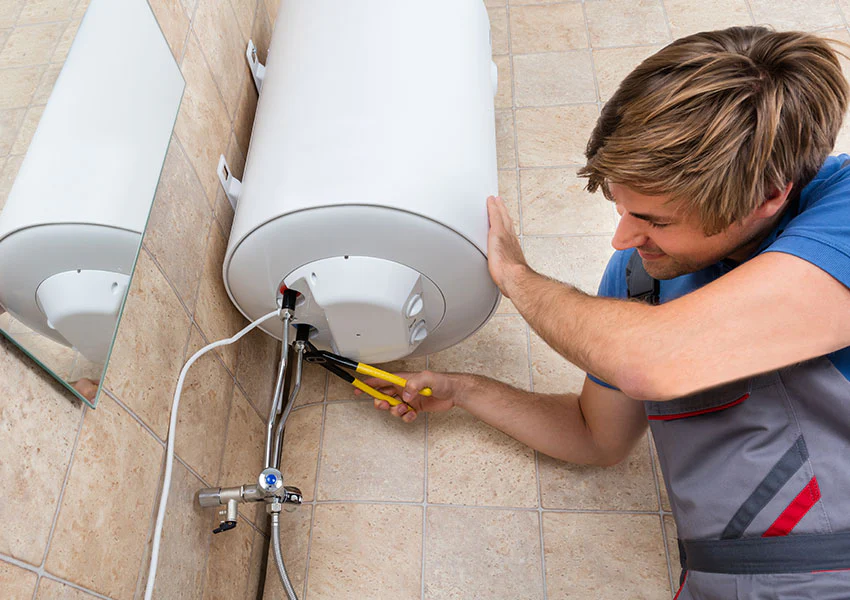Tips on How to Maintain Your Home's Hot Water System Functioning WellSteps to Successfully Care for Your Home's Hot Water System
Tips on How to Maintain Your Home's Hot Water System Functioning WellSteps to Successfully Care for Your Home's Hot Water System
Blog Article
We have noticed this great article on What Kind of Maintenance Do Water Heaters Need? directly below on the internet and believe it made good sense to talk about it with you here.

Hot water is vital for day-to-day comfort, whether it's for a rejuvenating shower or cleaning dishes. To guarantee your warm water system runs efficiently and lasts longer, regular maintenance is key. This post provides functional tips and understandings on how to keep your home's hot water system to prevent disruptions and pricey repair work.
Intro
Maintaining your home's warm water system might seem overwhelming, but with a couple of basic actions, you can ensure it runs smoothly for many years ahead. This guide covers whatever from recognizing your hot water system to do it yourself maintenance suggestions and recognizing when to hire specialist help.
Significance of Keeping Your Hot Water System
Normal maintenance not only expands the lifespan of your hot water system yet additionally ensures it operates successfully. Neglecting maintenance can cause lowered efficiency, higher power costs, and even premature failure of the system.
Indications Your Warm Water System Needs Maintenance
Understanding when your warm water system requires focus can prevent major concerns. Keep an eye out for signs such as inconsistent water temperature level, weird sounds from the heater, or rustic water.
Understanding Your Hot Water System
Prior to diving right into upkeep jobs, it's handy to understand the fundamental elements of your warm water system. Commonly, this includes the water heater itself, pipes, anode rods, and temperature controls.
Regular Monthly Maintenance Tasks
Routine regular monthly checks can aid capture small problems prior to they rise.
Purging the Hot Water Heater
Purging your hot water heater removes sediment buildup, improving efficiency and extending its life.
Checking and Replacing Anode Rods
Anode poles protect against corrosion inside the storage tank. Checking and replacing them when worn out is essential.
Examining and Changing Temperature Settings
Adjusting the temperature settings guarantees optimum efficiency and safety and security.
Do It Yourself Tips for Upkeep
You can execute numerous upkeep jobs on your own to keep your warm water system in leading problem.
Looking for Leakages
Frequently check pipes and connections for leaks, as these can bring about water damages and greater expenses.
Evaluating Pressure Relief Valves
Examining the stress relief valve guarantees it functions correctly and avoids extreme pressure accumulation.
Shielding Pipelines
Protecting hot water pipelines minimizes warmth loss and can conserve power.
When to Call a Specialist
While do it yourself upkeep is advantageous, some issues require expert knowledge.
Complex Problems Needing Expert Aid
Examples consist of major leakages, electrical troubles, or if your water heater is consistently underperforming.
Routine Specialist Maintenance Benefits
Specialist maintenance can consist of comprehensive assessments, tune-ups, and guaranteeing compliance with safety and security standards.
Verdict
Routine upkeep of your home's warm water system is necessary for efficiency, longevity, and expense financial savings. By following these ideas and knowing when to seek specialist help, you can make sure a trusted supply of warm water without unforeseen disruptions.
Water Heater Maintenance Tips
Test the TPR Valve
Shut off the power and the cold-water supply valve. Place a bucket under the pipe connected to the temperature-pressure-release (TPR) valve on the top or side of the tank. (This valve opens if the tank pressure gets too high.) Lift the valve’s tab to let some water out, then let go. If water keeps flowing, drain the tank partway, unscrew the old valve with a pipe wrench, and install a new one. Check the Anode Rod
Put a hose to the tank’s drain cock and let out a few gallons of water. Now fit a 1 1/16-inch socket onto the rod’s hex head on top of the heater (or under its top plate) and unscrew the rod. If it’s less than ½ inch thick or coated with calcium, buy a new one, wrap its threads with Teflon tape, put it back in the tank, and tighten securely. Use this segmented rod if headroom above the tank is limited. Drain the Tank and Wash Out Sediment
Drain the remaining water in the tank into the bucket, then stir up the sediment on the tank’s bottom by briefly opening the cold-water supply valve. Drain and repeat until clean water comes out of the hose. Close the drain cock, refill the tank, and turn its power back on. Adjust the Temperature
Find the temperature dial on the side of the tank and unscrew its cover. Adjust the dial to 120 degrees using a flathead screwdriver. For every 10 degrees the temperature is lowered, you can expect to save up to 5 percent in energy costs. Turn the water heater off or the thermostat down to its lowest setting if you plan to be away from home for more than three days. Insulate the Pipes
Buy some self-sticking 3/8-inch-thick foam pipe insulation that matches the pipes’ diameter. Slide the foam over the hot-and cold-water pipes as far as you can reach. Insulating the cold-water pipe prevents condensation in summer. Peel the tape and squeeze the insulation closed. If the pipe is 6 inches or less from the flue, cover it with 1-inch-thick unfaced fiberglass pipe wrap. https://www.thisoldhouse.com/plumbing/21016402/how-to-maintain-a-water-heater

We were made aware of that write-up about How to Maintain a Hot Water Heater in a Few Simple Steps from a good friend on a different web blog. So long as you appreciated our blog entry kindly do not forget to share it. We value reading our article about What Kind of Maintenance Do Water Heaters Need?.
Further Details Report this page